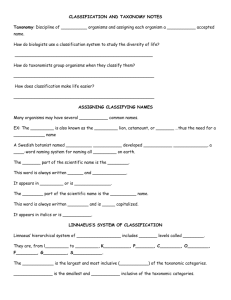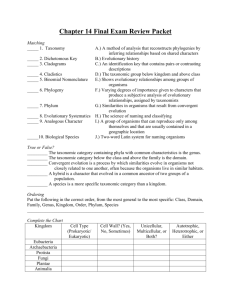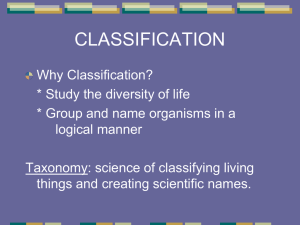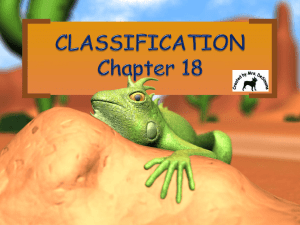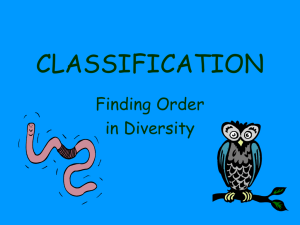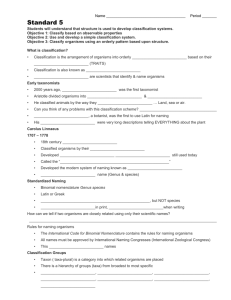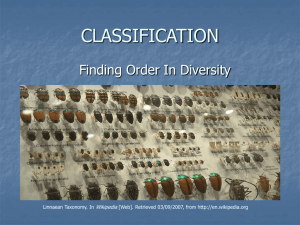Taxonomy & Classification Lecture
advertisement
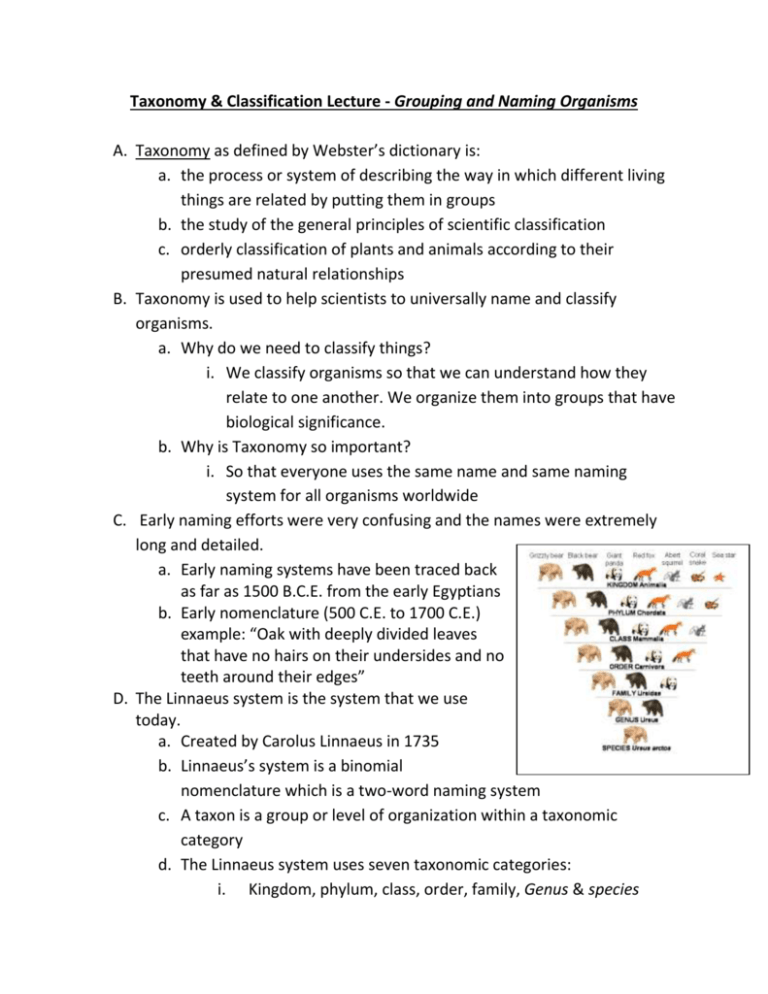
Taxonomy & Classification Lecture - Grouping and Naming Organisms A. Taxonomy as defined by Webster’s dictionary is: a. the process or system of describing the way in which different living things are related by putting them in groups b. the study of the general principles of scientific classification c. orderly classification of plants and animals according to their presumed natural relationships B. Taxonomy is used to help scientists to universally name and classify organisms. a. Why do we need to classify things? i. We classify organisms so that we can understand how they relate to one another. We organize them into groups that have biological significance. b. Why is Taxonomy so important? i. So that everyone uses the same name and same naming system for all organisms worldwide C. Early naming efforts were very confusing and the names were extremely long and detailed. a. Early naming systems have been traced back as far as 1500 B.C.E. from the early Egyptians b. Early nomenclature (500 C.E. to 1700 C.E.) example: “Oak with deeply divided leaves that have no hairs on their undersides and no teeth around their edges” D. The Linnaeus system is the system that we use today. a. Created by Carolus Linnaeus in 1735 b. Linnaeus’s system is a binomial nomenclature which is a two-word naming system c. A taxon is a group or level of organization within a taxonomic category d. The Linnaeus system uses seven taxonomic categories: i. Kingdom, phylum, class, order, family, Genus & species E. F. G. H. ii. The scientific name is Genus species Although we use the Linnaeus taxonomic system, we have eight taxonomic categories, and those categories could also have subcategories. a. Domain, kingdom, phylum, class, order, family, Genus, and species i. example: Canis lupis b. Sub-categories include sub-class and suborder Traditional Classification a. Problems i. Based on body structure and physical similarities. ii. Living things that are not related can share similar body structures due to convergent evolution and related organisms may have totally different body structures. 1. Convergent evolution is the appearance of apparently similar structures in organisms of different lines of descent. Evolutionary Classification a. Scientists now group organisms into categories that represent lines of evolutionary descent, not just physical similarities. b. Cladistics is now the preferred analysis method which uses derived characteristics to connect lineages. This method is used to construct a cladogram Role of DNA & RNA a. With the advancement in DNA and RNA we have been able to follow the genes of animals back through time. b. A molecular clock allows us to use DNA to estimate the amount of time that two organisms have been evolving independently, or how long ago the two organisms separated on the evolutionary tree. c. DNA advancement has also allowed us to ancestral relationships that we didn’t know existed: i. Example: yeast and humans both have a gene that codes for myosin, which shows us that at one point we had a common ancestor with yeast.
